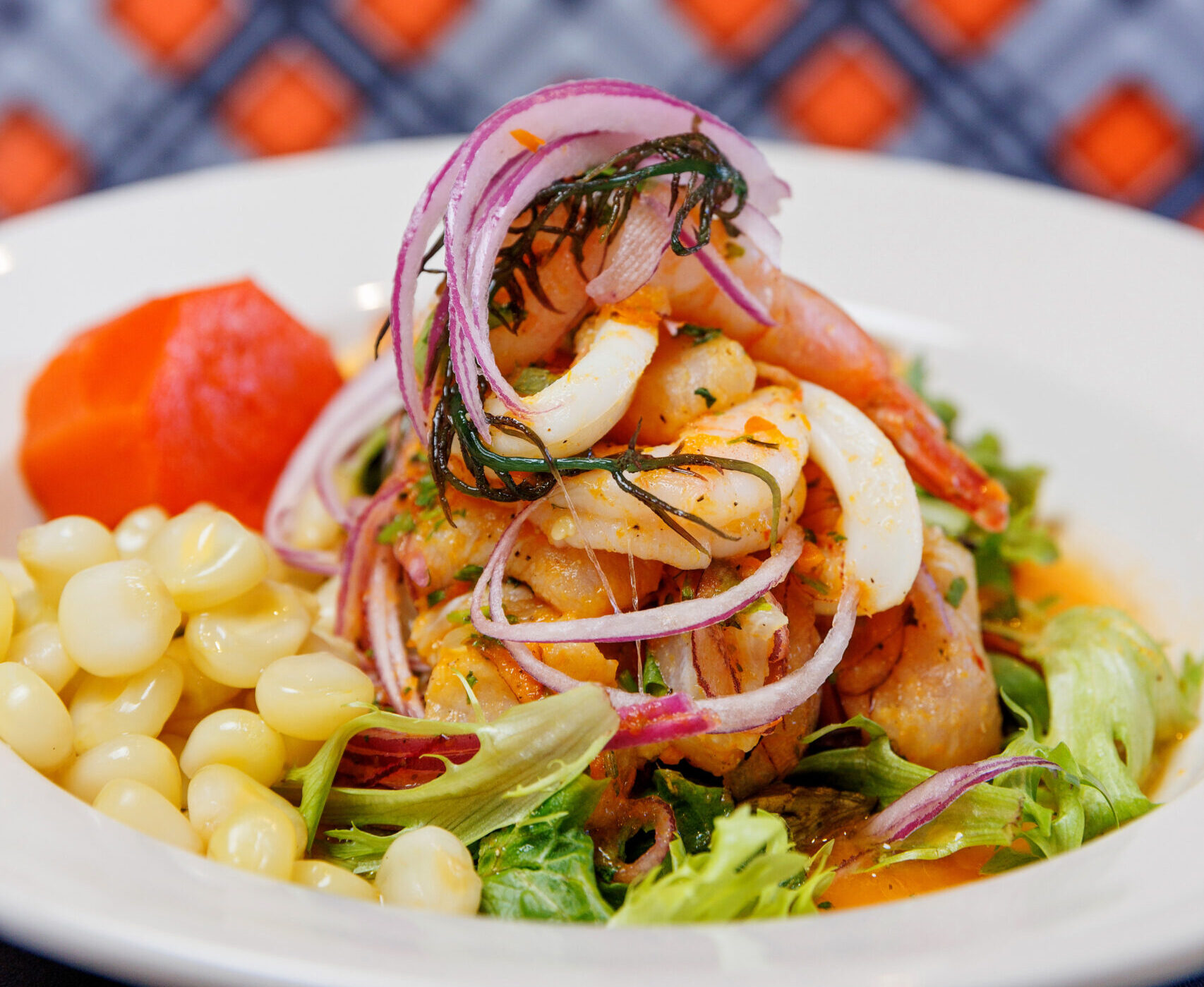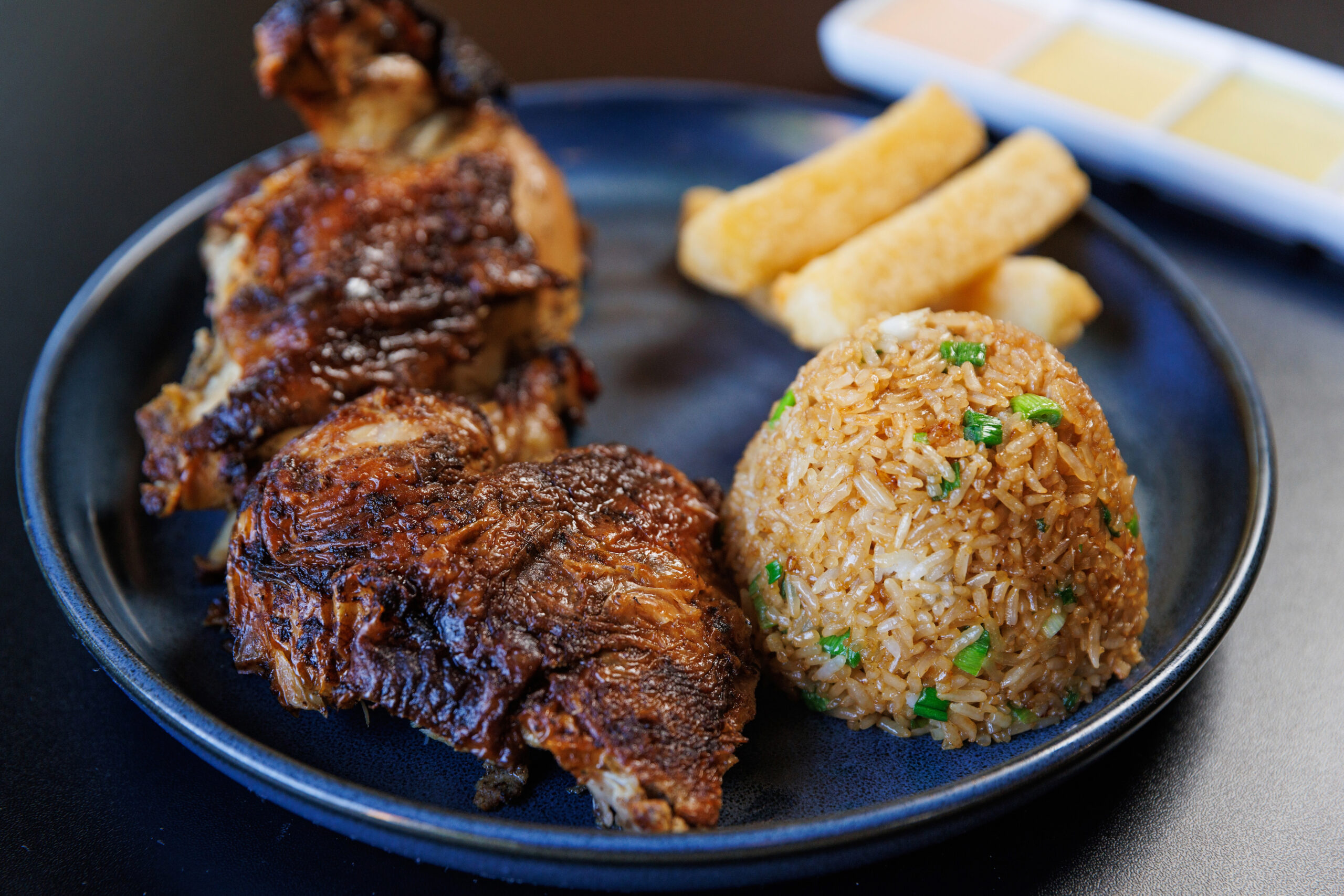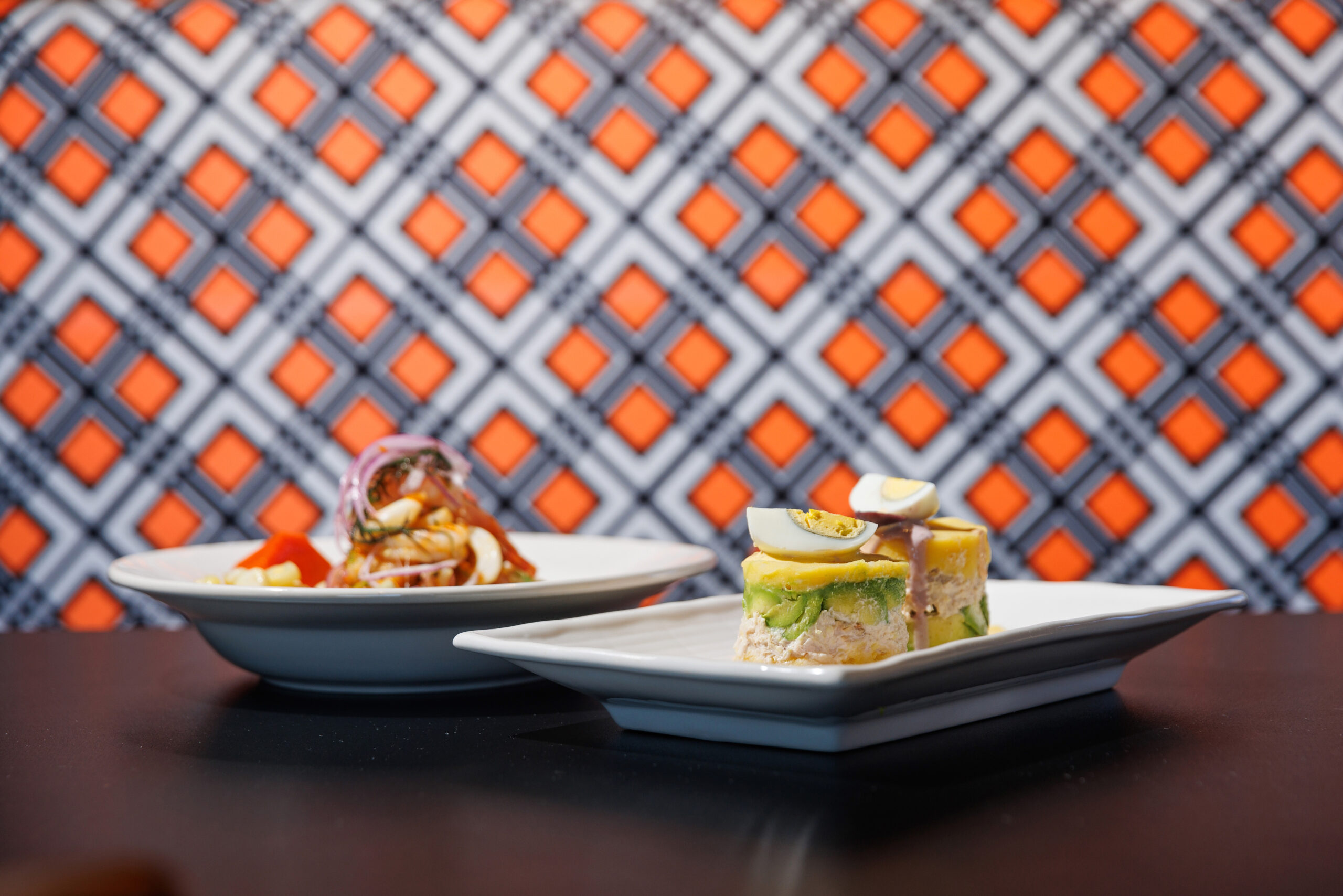
Brasas Peru is bringing new flavors and excitement to a tucked-away spot on Perkins Road
THE BASICS: Brasas Peru opened in June 2023 in the Beau De Chene Shopping Center on Perkins Road, the brainchild of Lima native Giannina Chavez, her brother Renzo Ibanez and sister-in-law Carolina Ayala. It’s a space that has seen seven different concepts open and close since 2010, but the excited reviews on social media give the impression this one has staying power. A bar area serves up pisco sours, beer, wine and hard-to-find Peruvian sodas.
WHAT’S A MUST: The delicious signature dish is Pollo a la Brasa, or charcoal-rotisserie chicken, served as a whole, half or quarter chicken with sides like Arroz Chaufa (fried rice) and Yuca Frita and four flavorful dipping sauces. The Cebiche is a zesty appetizer with lime-marinated raw fish, shrimp and squid as well as two varieties of Peruvian corn.
About 225’s food critic: Benjamin Leger previously served as managing editor for 225 and was the editor of its Taste section from 2012 to 2021, editing, writing and steering the direction of its food coverage in print and online. He is passionate about all things food and food journalism, and has written about the greater Baton Rouge area’s cuisine and culture for nearly two decades.
|
|
![]() Who knew I could be wowed by corn? It’s a huge staple of Peruvian cooking, and an ancient one at that, with colorful varieties, different textures and shapes to contrast what we know as the common kernel.
Who knew I could be wowed by corn? It’s a huge staple of Peruvian cooking, and an ancient one at that, with colorful varieties, different textures and shapes to contrast what we know as the common kernel.
So it’s no surprise this shows up on Brasas Peru’s menu in delightful ways. Even in my first appetizer, I discovered two varieties I had never tried before.
But let’s backtrack a bit.
Brasas Peru opened nearly a year ago in a Perkins Road building that has seen quite a few restaurants come and go.
From the reviews I’ve read online—even on Nextdoor—locals are already falling for its flavors and are excited to recommend it to their neighbors. That’s a promising sign, and it made me want to give it a try.
My partner and I stopped by on a quiet Tuesday evening. Our friendly server sat us at a booth in the warmly lit dining room.
First up, we ordered the Cebiche from the appetizer menu. I’m used to seeing this spelled as “ceviche” and served up almost shrimp cocktail-style, in a glass with plenty of chips for scooping. Here, the menu name deploys a Peruvian spelling, and the dish was plated on a bed of spring greens with a hunk of boiled sweet potato, giant kernels of Peruvian corn and maize chulpe, or roasted corn kernels.

There was so much unexpected deliciousness to unpack here.
At our server’s recommendation, I went with the mixed seafood version, which featured cubes of fish as well as plump shrimp and ring-like slices of squid.
The spicy lime juice mixture that coated the seafood was refreshing, and the seafood firmed up enough from the marinade to give it that practically cooked texture. Mixed with slivers of red onion and plenty of cilantro, this was the kind of zesty and bright ceviche I crave.
The other elements on the plate initially threw me off, but turned out to be great. The pale yellow Peruvian corn was essentially what you’d get in a bag of corn nuts, just cooked tender and imparting a corn mash texture inside with a more-mellow-than-sweet taste.
As for the maize chulpe, these narrow corn kernels were toasted in a way that gave them a crunchy exterior and a soft, popcorn-like interior. Commonly a Peruvian bar snack, they’re incredibly addictive, though these were surprisingly unseasoned. I wished there was a shaker of salt on the table for sprinkling on top.
I first mistook the dish’s cooked sweet potato for a piece of very large carrot, and the texture was somewhere between the two. For all I know, this could have been a regular sweet potato, but by this point in the meal, I was convinced everything I tried was a variety I’d never seen before.
And this was just the first appetizer.

Our second was Causa Rellena: Two stacks of mashed potatoes, chicken salad and avocado. There were three different sauces drizzled across the top—one purple, one orange and one yellow—as well as slices of boiled egg.
The cold mashed potato was off-putting to me. But the chicken salad, with shredded rotisserie chicken, helped elevate the dish. Taste tests told me the purple sauce was pureed black olives, and the spicy orange and yellow sauces contained some type of chilis. I later found out they were rocoto and ají peppers, native to Peru.
Fully impressed by what we encountered so far, it was time for entrees.
First up was Lomo a lo Pobre, which is Peru’s equivalent of steak, eggs and fries. Here, it was strips of tender filet mignon sauteed with red onions and tomatoes in soy sauce and served with a mound of white rice topped with two fried eggs, plus homemade fries and plantains on the side.

It was a hefty dish, and the sauce was our first introduction to the Chinese influences on Peruvian cuisine. Chinese immigrants dating back to the late 19th century impacted local cooking in a variety of ways, and it showed up here with soy sauce and Peruvian spices mixed together to create something savory but maybe verging on overpowering. Still, every component hit the mark.
Our final dish was also the namesake of the restaurant: Pollo a la Brasa. “Brasas” is Spanish for “embers” and refers to how rotisserie chicken is cooked over charcoal in a special oven.
We ordered a half chicken with Arroz Chaufa and Yuca Frita.
The chicken was super crispy and almost blackened on the outside with a clear layer of spices rubbed into the meat. On the first bite, I knew immediately that cumin was the main seasoning—and I was all the happier for it. This delectable chicken on the bone might be a new local favorite for me.

Arroz Chaufa is Peru’s version of Chinese fried rice, with plenty of green onions mixed in for brightness. The Yuca Frita, or yuca fries, were dense, crispy and very addictive.
Accompanied by four (yes, four!) dipping sauces on the side, I’d go as far as to say this is the new meat-and-two-sides dish Baton Rouge needs.
We left Brasas Peru pleasantly full and still curious about everything we tasted.
I’d be remiss if I didn’t mention there’s a full bar with unique cocktails and Peruvian sodas worth a try—yet another reason to make this a must for local foodies.
And I definitely plan to return. I learned so much about Peruvian cooking and the country’s diverse ingredients that night, and I’m ready to go back for more.
Packs a punch
Brasas Peru’s signature dish, Polla a la Brasa, comes with four creamy side sauces. Here’s a rundown of the spicy (and less spicy) Peruvian dips.
- Rocoto: A red hot pepper sauce using chilis similar to habanero
- Ají Amarillo: A yellow pepper sauce
- Huacatay: A green sauce of black mint mixed with yellow pepper
- White sauce: Brasas’ mellow house dipping sauce
This article was originally published in the March 2024 issue of 225 magazine.
|
|
|

